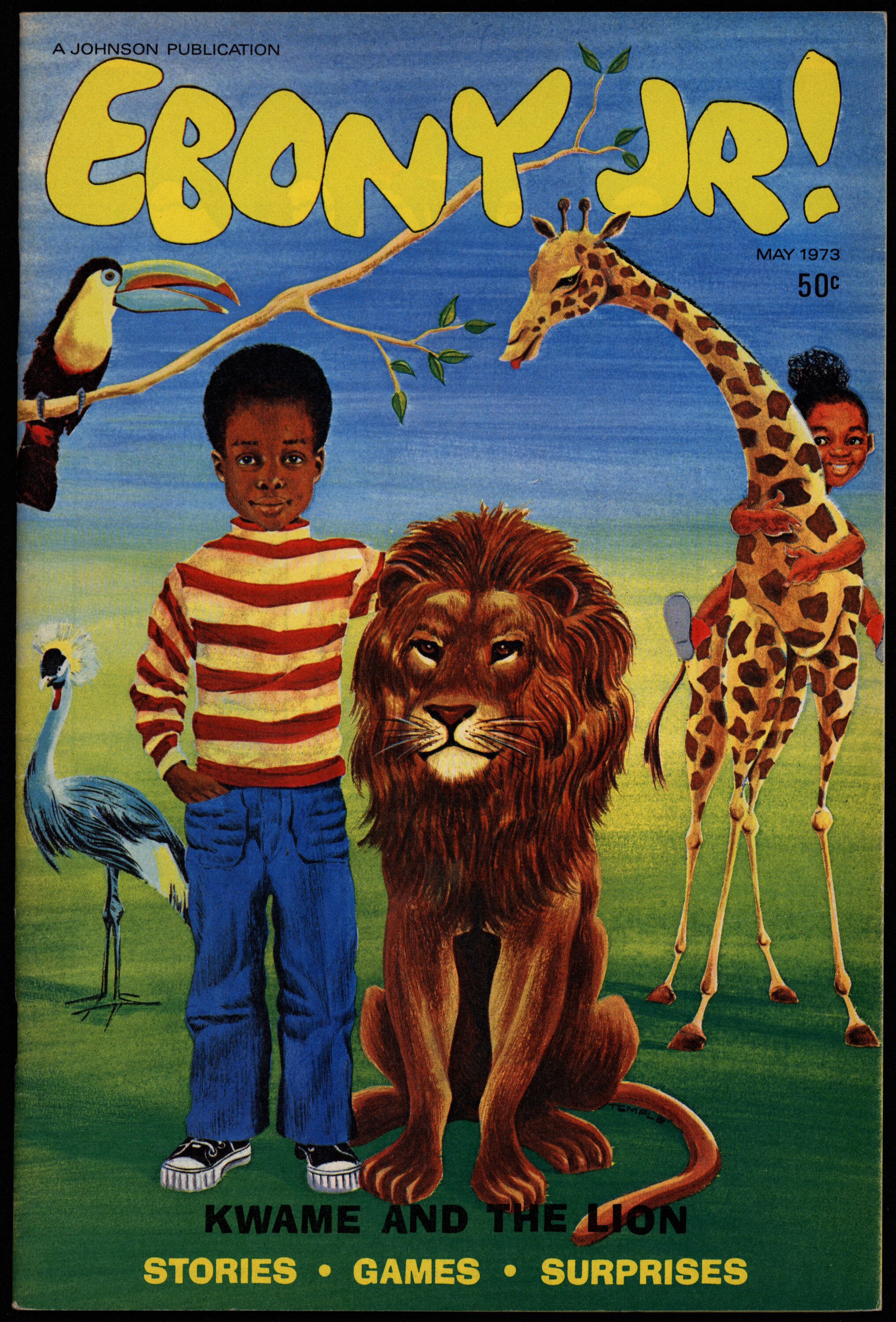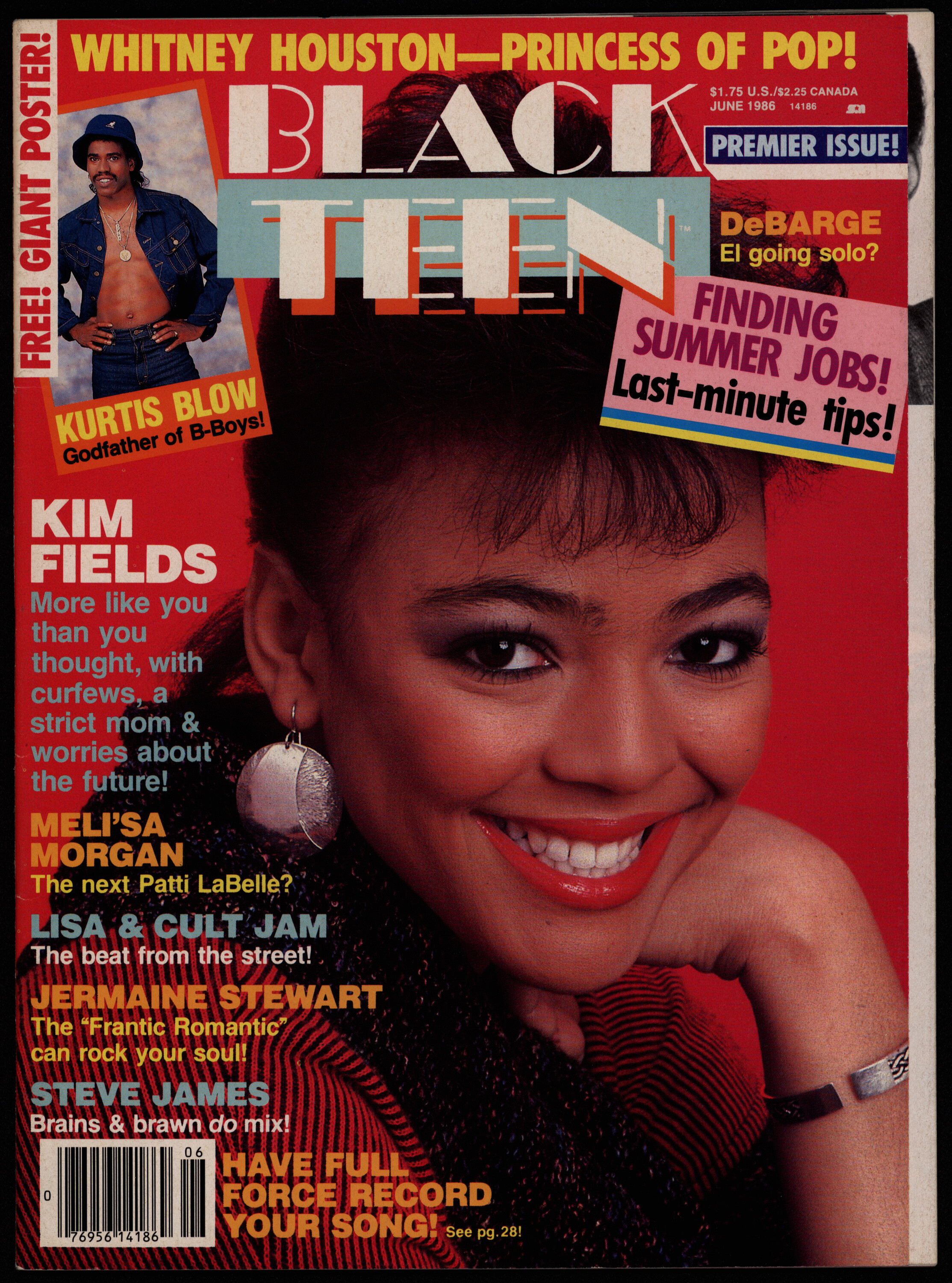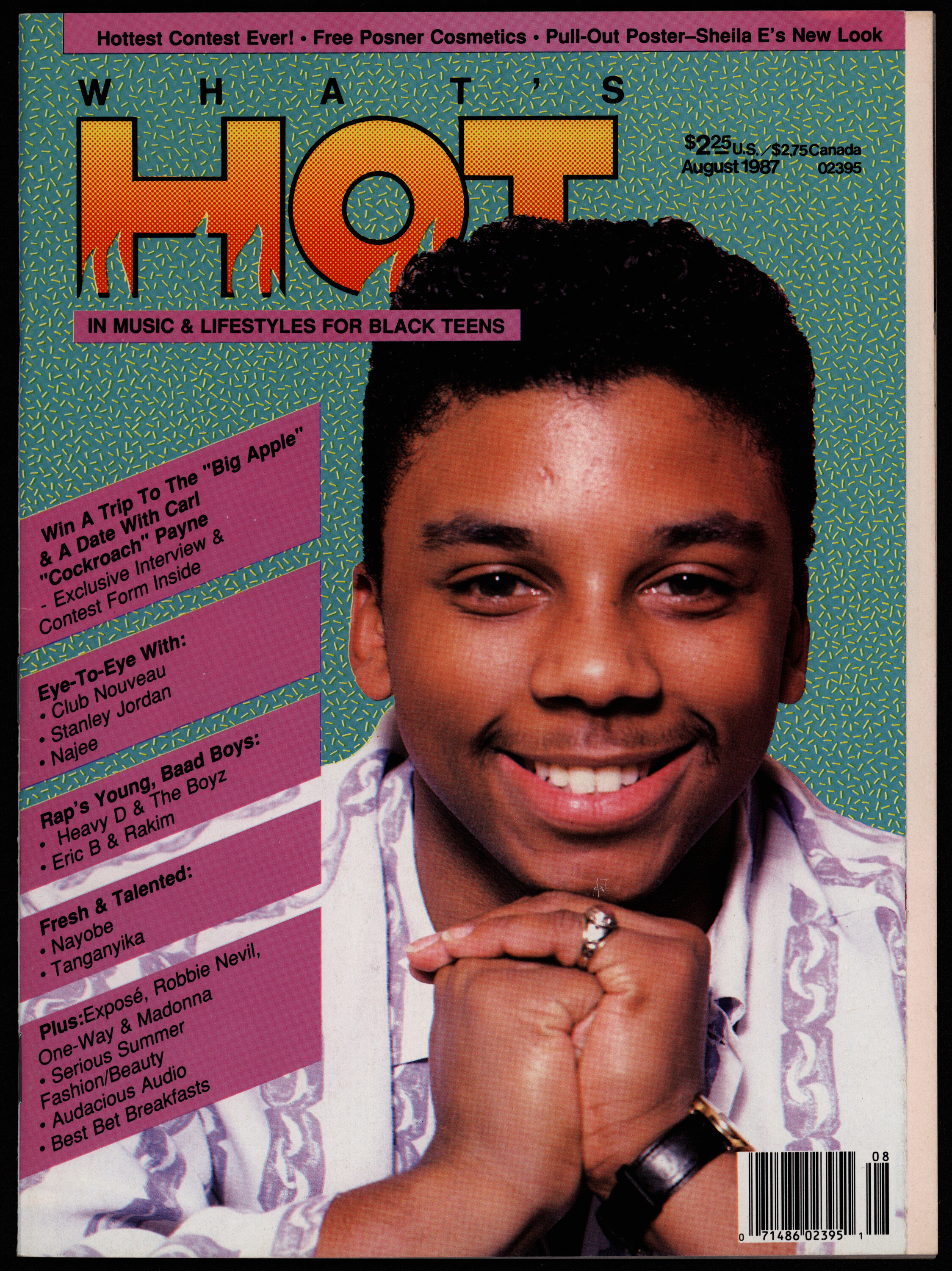Life in America: Sixteen Black Magazines from 1953 to 1998
Youth and Teenage Magazines
Black magazines for children and teenagers started out with a focus on Black heritage, arising out of the politically charged atmosphere of the 1960s and 1970s. At issue was the need for magazines that praised rather than condemning Black history and that offered children role models in the Black community. Like the discourse around Black hair, these magazines often gradually drifted away from their original purpose and gained broader audiences, particularly if and when they focused on products of Black culture like music or art rather than specific Black individuals.
Included in this gallery are magazines from 1973 to 1991, starting with the educational Ebony, Jr. and continuing to more teen-centric magazines that did not exclusively target a Black audience. Perhaps tellingly, none of the magazines included in this gallery had particularly long run times. A key component of the business of magazines is being able to sell advertising space, which magazines aimed at younger audiences often try to avoid.
Ebony, Jr. Vol. 1, No. 1 (1973)
Ebony, Jr. was one of many magazines published by the Johnson Publishing Company, the publishers of iconic magazines like Ebony and Jet. It was the first dedicated children’s magazine for Black Children since W.E.B. Du Bois’s The Brownies’ Book (1920-1921). The magazine emphasized education and pride in Black heritage and was produced to a very high standard, featuring lavish color printing and high-quality artwork. Like all of the Johnson Publishing Company’s output, it offered its audiences images of itself: it was a magazine for Black children. The recurring characters Honey and Sunny were explicitly dressed in contemporary Afrocentric styles, especially in the beginning, and under its first editor Constance Van Brunt Johnson, the magazine included articles on Africa in each issue.
This first issue of the magazine features stories and information about Hank Aarons, Langston Hughes, Robert Smalls, and Imhotep. It also includes logic games, advice on drawing self-portraits, a song with sheet music, a biscuit recipe, and a piece about recent Black figures in the news.
Ebony, Jr. ran from 1973 until 1985, and was quite successful, reaching circulation numbers of 100,000 at its peak. Unfortunately, like many children’s magazines, it was difficult to find appropriate sources of advertising and so Ebony, Jr. was eventually shuttered, though an online version using Flash animation was started up in 2007 and lasted until at least 2014 before going defunct.
Black Teen Vol. 1, No. 1 (1986)
Published by Go-Stylish Publishing Company, the same company that put out Black Elegance and its associated titles, Black Teen appears to have been focused on male Black teens and focused mainly on music and celebrity news. One interesting feature in the magazine was the tagging of articles based on the gender of their subject: pieces about male celebrities were grouped in the table of contents as “The Main Men” while pieces about female celebrities were grouped as “The Ladies’ Turn.”
This first issue of the magazine features Steve James and Kim Fields as well as covering bands like Lisa Lisa and the Cult Jam and 9.9, and individual artists like Kurtis Blow and Joyce Kennedy. Alongside the celebrity news, the magazine also gives advice on getting a summer job and beauty tips, as well as a horoscope and “Blackfacs,” a Black-focused trivia quiz.
A magazine with the same title is currently published by Lanare Publishing, but it appears to be distinct from the Black Teen of the 1980s.
What’s Hot Vol. 1, No. 1 (1987)
What’s Hot’s full title was What’s Hot in Music & Lifestyles for Black Teens and that focus on music is very clear: the magazine features many short articles, but the only one that doesn’t feature a musician. That one non-musician is the actor Carl Anthony Payne II, here called “Carl ‘Cockroach’ Payne” after his character on The Cosby Show. The music runs a wide gamut, with emphases on R&B, jazz, and rap. Artists covered include Stanley Jordan, Jonathan Butler, the Rose Brothers, Nayobe Gomez, Heavy D. and the Boyz, Club Nouveau and Najee. Almost all of the artists covered are Black, with the exception of Robbie Nevil and Madonna.
In addition to musicians, the magazine also includes short pieces on hairstyles, shoes, fashions, and, album recommendations. One piece towards the end that stands out is a collection of three simple breakfast recipes for French toast, omlettes, and fruit salad (to encourage teens to “learn good eating habits to take into the school year”).
YSB Vol. 1, No. 1 (1991)
YSB, which stands for “Young Sisters and Brothers,” ran from 1991 until 1996. It was founded by Black Entertainment Television (BET) and was designed to be the first national lifestyle magazine for Black teens. Despite BET’s general image as reinforcing negative Black stereotypes, YSB made a deliberate, determined effort to model a clean, polite style. It pointedly did not feature hip-hop artists who denigrated women or glorified violence and although its primary focus was music and fashion, it also dealt with drug abuse, AIDS, and violence.
This first issue of the magazine features articles on the R&B band the Tonies, the gymnast Betty Okino, and teen violence. Other pieces include advice on selecting a stereo sound system, saving and investing money, and dating, as well as a foldout poster of the band Boyz II Men and a photo series of clothing ensembles.
YSB had trouble finding an audience, since its title created the impression that it was for children but the topics it covered were more adult, which may have contributed to its early decline. The magazine was never profitable, though its ambition was impressive.



